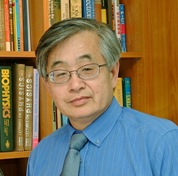Field Cycling vs. Prof. Alfred G. Redfield
It is a great sadness that Prof. Alfred G. Redfield left us. He had donated his life to NMR research, especially NMR relaxation. His last work was pushing the field-dependent relaxation, relaxometry study, into atomic resolution. His pioneer point of view opened a brand new aspect of NMR relaxation study.
We are honor to invite Prof. Mary F. Roberts, Emeritus Professor of Chemistry department from Boston College, and Prof. Tai-huang Huang, Prof. Dr. Distinguished Research Fellow from Academia Sinica to share their stories working with Prof. Redfield on field-cycling NMR.

Al’s last project was to make an add-on shuttling system for a Varian INOVA Plus (it was underutilized at Brandeis once the 600 MHz spectrometer was available) that was simple enough for a biochemist to use (that was where I came in). The initial goal was ‘high-resolution’ 31P field cycling relaxometry. While there are lots of interesting phosphorus-containing biomolecules, at the high fields of modern spectrometers the 31P T1 has a large CSA relaxation component as well as dipolar interactions. Initially, Al thought that at the very least one would be able to get correlation times and an effective distance between the 31P and 1H nuclei that relax it. I used to refer to it as ‘Al’s Spin Spa’ because shuttling to low fields was a great way to relax spins . . .

Prof. Redfield’s interest in field cycling dated back to the early 1960 when he first applied field cycling technique to investigate impurity in copper (Phys. Rev 1963). I also heard from him several times back in the 1970s of investigating field-dependent NMR phenomena by fast shuttling sample to different positions of a superconducting magnet where the stray fields are lower. Apparently he never got the time to do it until his retirement in 1999. Prof. Redfield published his first mechanical design version in Magn. Reson. Chem. in 2003 and the improved pneumatic version in JBNMR in 2012. Prof. Redfield’s field cycling design opened up a door for investigating full-range relaxation of individual nuclear spins of biopolymers with high resolution and sensitivity. . . .